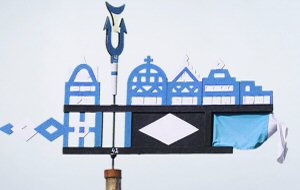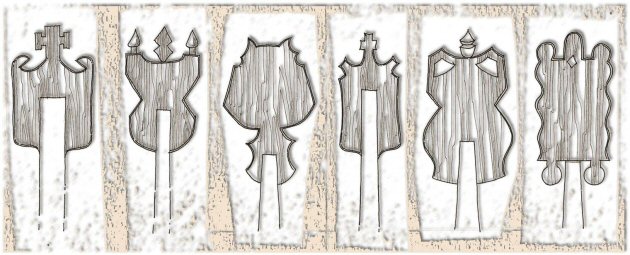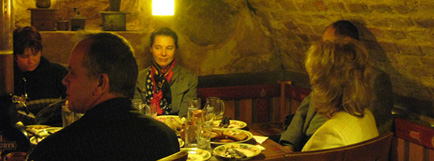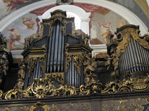Curonian Weathervane
Vetrunges – the Early Signs of Information and Communication


An example of weathervane and its location on the boat mast
Since early days the Curonian Lagoon has been the strategic area of transit, fishing, trade and military interests. Vikings were the first to mark the littoral settlements, harbours and ships with symbolic signs of animals. The Hanza Road has spread the earmarking even further and adjusted the signs to signify a hierarchic stratum. Ship symbols pointed out the owner of the boat: the king, the duke, the bishop, a landowner, also the area a sailboat was from. The ensigns earmarked the boundaries of the fishing territories, number of nets and the size of mesh, also trade areas. For many of the Curonian Lagoon fishermen a weathervane was a reflection of the family composition, dreams and the village he was from. Since the early 20th century weathervanes have become not only functional signs but also the symbol and original souvenirs of this region. The contemporary reflexion of the boats with Vetrunges and Krikštai – the mysterious grave markers seen in the pictures below.
 Albertas Krajinskas, Jurate Bucmyte,"Reconstruction of old curonian grave markers", (ink, watercolor) 1992. 20x30 cm
Albertas Krajinskas, Jurate Bucmyte,"Reconstruction of old curonian grave markers", (ink, watercolor) 1992. 20x30 cm

Albertas Krajinskas,"Old Boats of the Curonian lagoon" 2005. Acrylic,.70x100 cm











